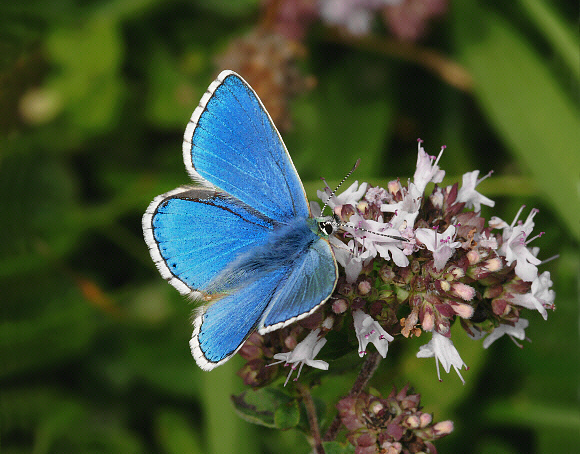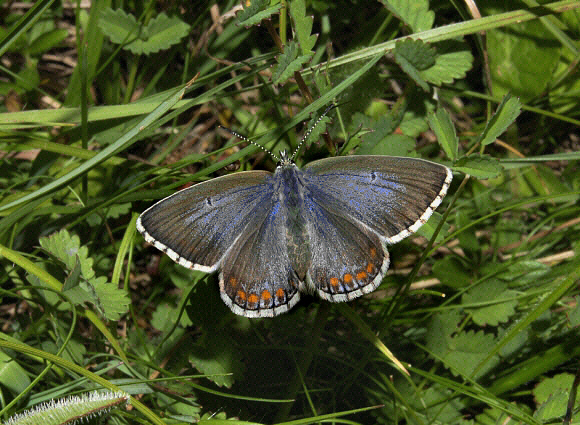In many species, such as the Adonis Blue Lysandra bellargus, the males are much more brightly coloured than the females. One reason for this is that males are constantly flying in search of mates, so they need to advertise their presence.
Females however are more sedentary, tending to move very little until mated. Afterwards it may take them several days to lay all of their eggs so it is vital to minimise the likelihood of being attacked by a predator. Consequently it is advantageous for females to have drabber and more cryptic colouration.

Lysandra bellargus – male – Adrian Hoskins

Lysandra bellargus – female – Adrian Hoskins
Intrasexual competition
Another reason for the evolution of bright colourful males is that males are in competition with each other. Hingston argues that male butterflies engage in “psychological warfare, a battle of bravado, gesticulation and threat”, ‘their colours are their weapons”.
When males meet they usually indulge in fierce and often prolonged territorial battles. These waste valuable time and energy that would be better devoted to the pursuit of females. If a male could recognise other males from a distance he could avoid unnecessary battles, and hasten his chances of finding and mating with a female.
Bright colours are more easily seen from a distance, so it is feasible that males evolved brighter colours so they could recognise and avoid their own sex.
